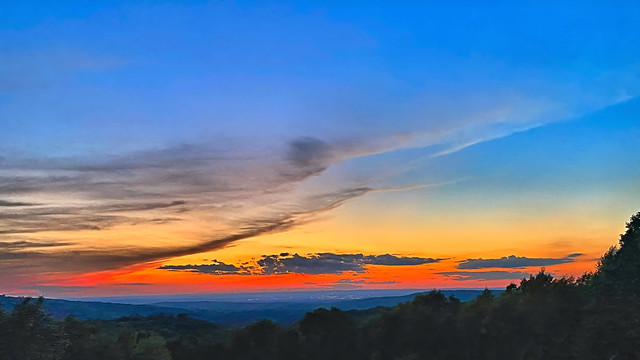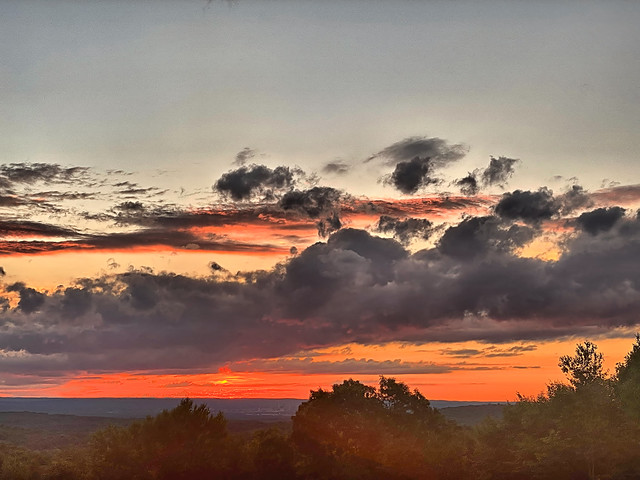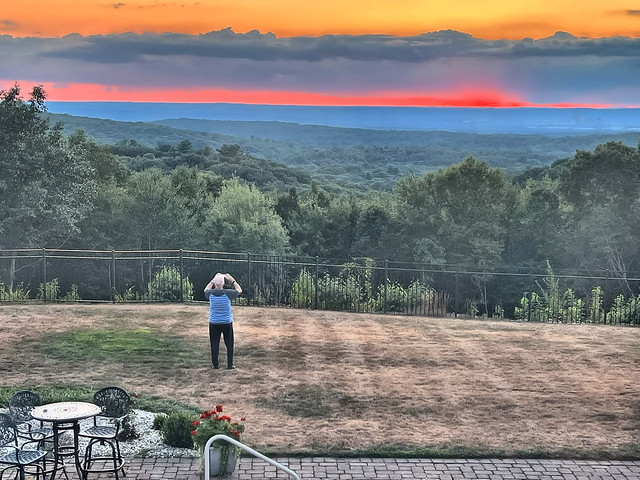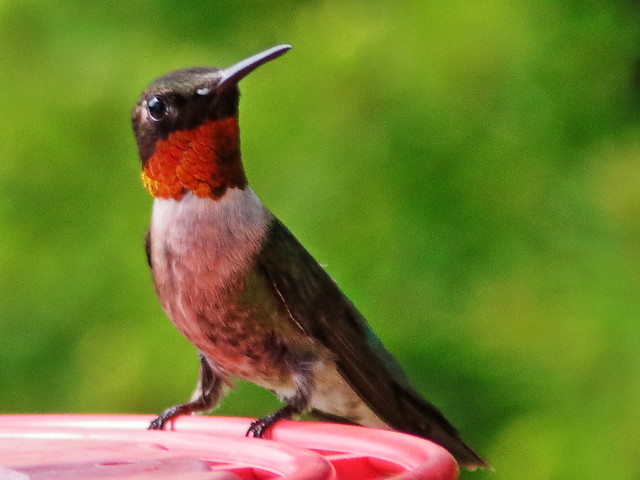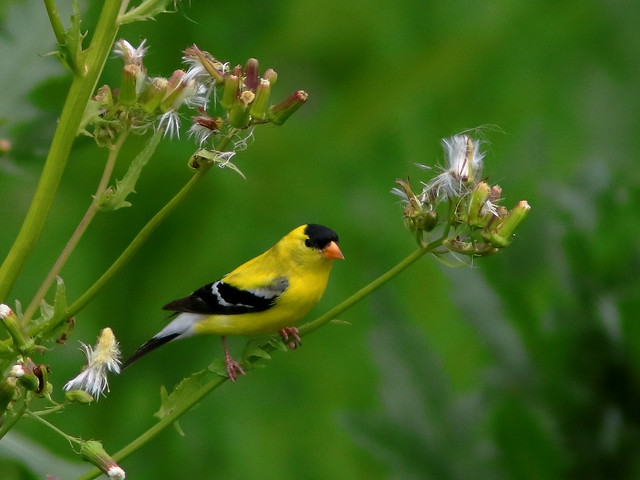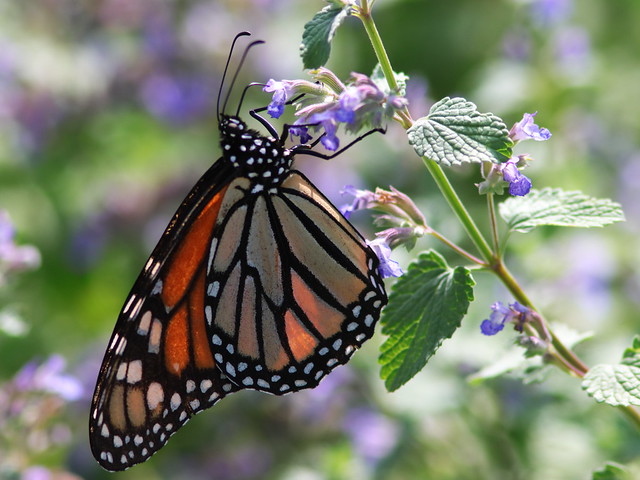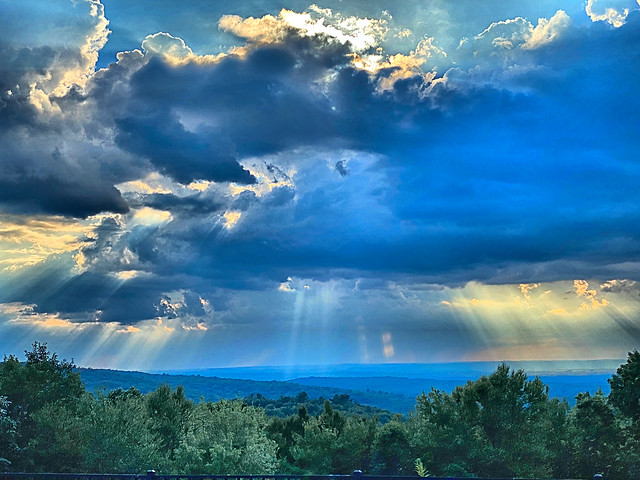Our single nectar feeder has been unusually busy with adult female and immature hummingbirds. The adult males have presumably migrated to the south and the others are storing energy for the long flight before they depart in the coming weeks:
A few days ago, Yellow Jacket wasps suddenly took over the feeder and were driving away any hummingbirds that wished to sip the sugar water. The sight of only a single wasp may discourage a hungry hummer. Wasps do sting hummingbirds. I could not substantiate claims that they have even killed them (** REF below). A wasp can attack suddenly and very accurately:
Flowers have faded and the ground is parched. In any event, the thirsty wasps have taken over. Indeed, as soon as I walk out to hang the feeder after replenishing it, a wasp may land on it just as I step out the door:
This wasp trap has somewhat reduced the threat, but they still visit the feeder:
I took this slow motion video to show how quickly the wasps attack and disrupt the hummingbirds:
My back yard list of bird species remains stalled at a total of 66 species, though I was able to shift the Indigo Bunting from "heard only" to "photographed on site" when one landed on the back fence on July 31, raising this subset to 51 species. It was a poor shot from a distance:
The birds are very quiet. Some migrants have already disappeared and others are completing their post-breeding molt and storing energy for the long flight. I was surprised to hear the plaintive whistle of an Eastern Wood-Pewee which was perching on a treetop against the gray sky, a photographic challenge:
An immature Red-shouldered Hawk permitted some through-the-window photos as it rested on the back fence:
A White-tailed Deer fawn joined his mother to browse on the Sow Thistle in the cleared area back of the home. I think it is a male because it has small antler knobs which square off the top of its head. Females usually have rather smooth dome-shaped crowns:
The doe kept watching me but they were still feasting peacefully as I crept away from the top of the cliff which overlooks the clear-cut:
A highlight this past weekend was a pig roast, which our daughter and son-in-law hosted for relatives, friends and neighbors. Our SIL emigrated from Cuba at twelve years of age and grew up in nearby Hartford. His new job allowed him to live anywhere in the NE states. His parents and a brother reside quite close by. Over seventy guests attended. No other homes are visible from their property, so we were pleased to meet several of our neighbors for the first time.
The pig was slowly cooked in a "caja china," which is Spanish for "Chinese box." It is a roasting box which is often said to have been used in Cuba in the mid-1800s by Chinese laborers. However, in Cuba it is called "caja asador" (cooking box) and may have gotten its name "china" because anything foreign or exotic can be called "chinese" by Latin American Spanish speakers-- analogous to the way English speakers may say "it is Greek to me" about anything difficult to understand.
The yard was all set up before guests arrived:
The partygoers enjoyed a beautiful sunset:
**Of interest: 10 Common Things That Kill Hummingbirds
= = = = = = = = = = = = = = =
Skywatch Friday
Weekend Reflections
Saturday's Critters
BirdD'Pot
All Seasons
Wordless Wednesday (on Tuesday)
My Corner of the World
________________________________________________
Please visit the links to all these posts to see some excellent photos on display
________________________________________________

















